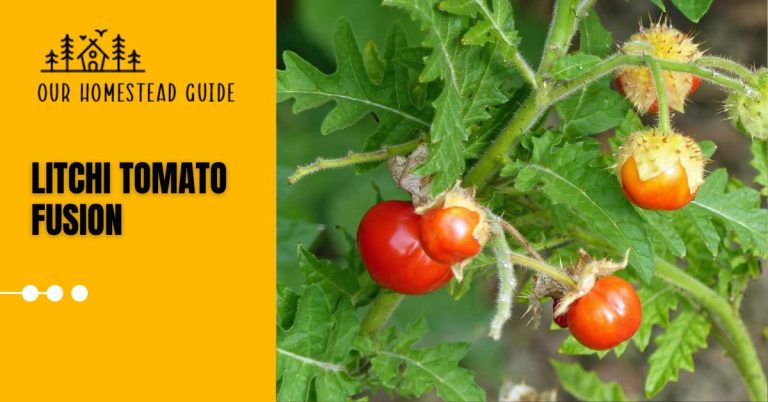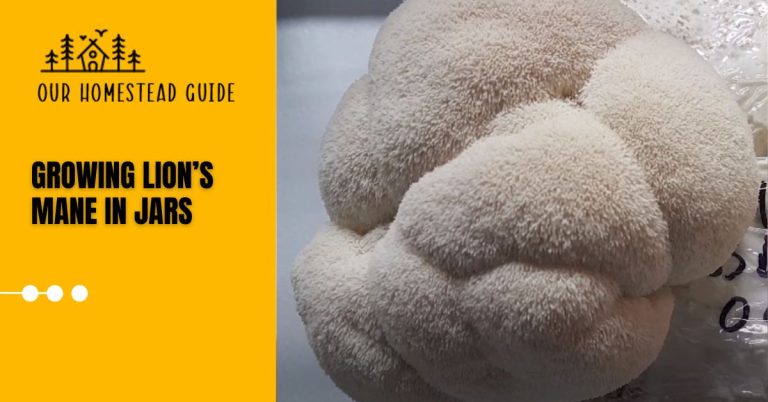10 Tips of Growing Purple Hull Peas: Planting and Care
Growing Purple Hull Peas, like the renowned apple pie, have a long cultural history. This healthy legume is celebrated with lively celebrations throughout the southern states. From Mississippi to Louisiana and Georgia, these vibrant peas take center stage in a wide range of culinary treats, from Hoppin’ John to Rosh Hashanah feasts. The annual Purple Hull Pea Festival, a June tradition in Arkansas, is one such event.
Learn about the time-honored tradition of cultivating purple hull peas, a treasured Southern staple. In this book, we’ll look at the art and techniques of growing these bright legumes, conserving a culinary history that has been passed down through centuries. Join us on a tour into the world of purple hull peas, whether you’re a seasoned gardener or a beginner.
Purple hull pea cultivation is second nature to those of us who grew up in this area. We’ve been doing it since we were kids, much like learning the art of deer spotting – a skill that lives on in our memory.
Instruction
Step 1: Choose the Right Variety
Make sure you get the right kind of purple hull peas. The variety advised is “Top Pick Pink Eye Purple Hull Peas.” Other types should be avoided since they may not deliver the desired outcomes.
Step 2: Source Quality Seeds
Buy seeds from a reliable supplier. If they are not accessible locally, look for them at local stores or try getting them online.
Step 3: Planting
When planting, space your purple hull pea seeds four to five inches apart in your garden to allow for good growth and development.
Step 4: Minimal Fertilization
Provide a modest amount of fertilizer while planting. Overfertilization should be avoided since it might result in more foliage and fewer beans.
Step 5: Proper Care
Monitor your plants for symptoms of overgrowth or nutritional imbalances, and intervene as needed to keep them healthy. Maintain continuous care and watering to guarantee their health and growth.
Step 6: Support Growth
If the purple hull pea plants get too bushy, they may benefit from support structures. Consider offering assistance to keep them upright.
Step 7: Harvesting
Purple hull peas are ready to harvest when the pods have fully matured and the peas within have reached maturity. Pick them as they mature.
Step 8: Soil Building
Purple hull peas are great for soil development. After harvesting, the plants can be chopped down and plowed into the soil. This improves the soil by adding organic matter and nitrogen, which will help future crops.
Step 9: Consider Cover Cropping
Consider growing a cover crop of purple hull peas across your yard to enhance the soil. You may chop them down when they have grown and cover the garden with leaves for the winter.
Step 10: Enjoy the Harvest
Purple hull peas are not only beneficial to soil health, but they are also tasty. Enjoy your freshly produced peas, and consider shelling them for storage or cooking.
Information Table
Certainly, here’s a table with important facts on cultivating purple hull peas:
| Aspect | Information about Growing Purple Hull Peas |
| Planting Time | Late spring to early summer, after the last frost. |
| Location | Choose a sunny spot with well-drained soil. |
| Soil Type | Well-drained loamy soil; pH of 6.0 to 6.5. |
| Planting Depth and Spacing | 1 inch deep, 2 to 4 inches apart in rows or hills. |
| Watering | Keep soil consistently moist; avoid wetting foliage. |
| Mulching | Apply organic mulch to conserve moisture and control weeds. |
| Support (if needed) | Some varieties may require trellises or stakes. |
| Pest and Disease Management | Monitor for pests and diseases; use organic controls when necessary. |
| Harvesting Time | Typically 60 to 75 days after planting, when pods are plump and peas are tender. |
| Storage | Freeze or can excess peas for preservation. |
| Crop Rotation | Practice crop rotation to prevent soil-borne diseases. |
| Companion Plants (optional) | Consider planting basil or marigolds for pest deterrence. |
| Benefits | Nutritious, versatile, and supports soil health. |
| Cultural Region | Primarily grown in the Southern United States. |
Types of Purple Hull Peas
Purple hull peas are a variety of Southern pea or cowpea that is recognized for its tasty, purple pods and soft, cream-colored peas on the inside. Purple hull peas come in a variety of types, each with its own distinct qualities. Here are some examples of common purple hull peas:
Purple Pinkeye Hull:
This is one of the most popular purple hull pea types. They have pink or crimson eyes and are well-known for their sweetness and softness. Pinkeye purple hull peas are a Southern favorite.
The Purple Hull of Mississippi:
These peas are identical to Pinkeye purple hull peas, although they are more often farmed in Mississippi and other southern states. They are highly valued for their flavor and are regularly used in recipes such as hoppin’ john.
Cream of Texas:
Texas Cream purple hull peas are somewhat bigger than other types and have a creamy feel. They have bright purple or pink eyes and are frequently used in cuisines such as succotash.
Silver in Mississippi:
Mississippi Silver purple hull peas are distinguished by silver-gray pods and creamy peas. When compared to other types, they have a milder flavor.
Colossus:
Colossus purple hull peas are distinguished by their enormous pods and peas. They are highly valued for their production and are frequently used in canning and freezing.
Purple Hull of California Blackeye:
This type, a hybrid between black-eyed peas and purple hull peas, has a pronounced black eye. They are well-known for their taste and adaptability in Southern cuisine.
The reign of Queen Anne:
Queen Anne purple hull peas are distinguished by their petite, round shape and sweet taste. They’re popular in salads and as a side dish.
Zipper Lotion:
Zipper Cream purple hull peas are similar to Texas Cream peas in texture and flavor, with a light, buttery flavor.
The Pink Lady:
Pink Lady purple hull peas are praised for their sweet flavor and soft peas and have a pink eye.
The Big Red Ripper:
The Big Red Ripper purple hull peas are bigger and have a reddish eye. They have a strong taste and are frequently used in traditional Southern cuisine.
Purple Hull Peas The Nutritious Delight of Home Gardening
“Purple Hull Peas: The Nutritious Delight of Home Gardening” is an excellent title for an article on the nutritional advantages and fun of cultivating these delectable legumes in your own yard. It can include information on their nutritional value, gardening advice, and the delight of eating produced vegetables.
Flavorful and Versatile Cooking Ideas for Freshly Grown Purple Hull Peas
Flavorful and Versatile Cooking Ideas for Freshly Grown Purple Hull Peas is a great article title since it may present readers with new and tasty ways to prepare and enjoy their cultivated purple hull peas. This page may contain recipes, cooking techniques, and culinary advice for making the most of this healthful and delectable item in the kitchen.
How can growing Purple Hill Peas be protected from diseases?
Protecting your purple hull pea plants from illnesses entails a mix of preventative and, if required, curative actions. Here are some tips for disease prevention and management in your purple hull pea garden:
Choose Disease-Resistant Plants:
Choose purple hull pea cultivars that are considered to be disease resistant in your area. Some diseases may be less sensitive to resistant variants.
Rotation of Crops:
Planting purple hull peas in the same area year after year is not recommended. Rotate your crops across the garden to minimize the accumulation of soil-borne diseases.
Sanitation:
Maintain proper garden hygiene by removing and disposing of plant detritus that might hold illnesses, such as sick pea plants or weeds. Clean your gardening equipment on a regular basis to prevent infections from spreading.
Correct Spacing:
Maintain adequate plant spacing to facilitate optimal air circulation. Adequate ventilation can aid in the prevention of fungal infections such as powdery mildew.
Soil with Good Drainage:
Purple hull peas should be planted in well-drained soil to avoid waterlogging, which can promote root rot and other soil-borne illnesses.
Mulching:
Apply mulch at the base of the plants to keep dirt from spilling onto the leaves during rains, lowering the risk of soil-borne illnesses. Utilize organic mulch such as straw or wood chips.
Water Administration:
To keep the leaves dry, water the plants from the ground rather than from above. Wet foliage is more vulnerable to fungal infections. Water in the morning to allow the leaves to dry before the evening.
Applications of Fungicides:
If you observe symptoms of fungal infections like as powdery mildew or downy mildew, you can use organic or chemical fungicides as directed by the manufacturer. Fungicides should be used as a prophylactic measure before disease signs become serious.
Planting companion plants:
Some companion plants, such as basil or marigolds, may help keep pests away from your purple hull peas. Consider growing these companion plants in close proximity.
Planting Beds with Resistance:
If you’re dealing with particularly difficult soil-borne infections, you may grow your purple hull peas in raised beds filled with new, disease-free soil.
Crop Inspection:
Inspect your pea plants on a regular basis for symptoms of illness, such as yellowing leaves, brown patches, or mold. Early detection allows you to intervene before the disease spreads.
Get Rid of Infected Plants:
If you locate plants that are highly infested with illnesses, remove them from the garden as soon as possible to avoid the pathogen from spreading to healthy plants.
Examine Local Resources:
Contact local gardening professionals, agricultural extension agencies, or gardening clubs for assistance on common diseases and effective management strategies in your area.
Purple Hill Peas are mostly grown in which regions and in what season?
Purple hull peas are predominantly farmed in the southern United States as a warm-season crop. They thrive in the warm, humid environment of the South and are a mainstay of Southern cuisine. Here are some significant growing locations for purple hull peas, as well as the average growth season:
South American countries:
Purple hull peas are most often farmed in southern states such as Texas, Mississippi, Louisiana, Alabama, Georgia, South Carolina, and sections of Florida. The environment and growth conditions are ideal for this warm-season legume in these places.
Texas:
Purple hull peas are particularly popular in Texas, where they are frequently produced and consumed throughout the summer months.
Mississippi:
Purple hull peas are grown in Mississippi and are normally sown in the late spring or early summer.
Louisiana:
Purple hull peas are a popular planting in Louisiana during the warm spring months.
Georgia and Alabama:
Purple hull peas are widely cultivated in Alabama and Georgia in the spring or early summer.
Benefits of Growing Purple Hull Peas
Growing purple hull peas has a number of advantages, both for your garden and for your nutrition. Here are some of the benefits of growing purple hull peas:
Value for Money:
Hull peas are a good source of critical nutrients including fiber, protein, vitamins (such A, C, and several B vitamins), and minerals (like potassium and iron). They can be an important part of a well-balanced diet.
Delicious Flavor:
Purple hull peas are well-known for their nutty taste. They may improve the flavor of numerous foods and expand your culinary range.
Versatility:
Purple hull peas may be used in a variety of dishes. They can be cooked, steamed, sautéed, or incorporated into soups, stews, casseroles, and salads. They are an adaptable component in Southern cooking.
Garden Soil Enhancement:
Purple hull peas, like other legumes, contain nitrogen-fixing characteristics. They collaborate with soil microbes to transform air nitrogen into a form that plants can use. This can boost soil fertility, making it more appropriate for following crops.
Rotation of Crops:
Purple hull peas are a wonderful crop rotation option in your garden. Planting them in new locations each season can help interrupt pest and disease cycles and enhance soil health overall.
High Returns:
Purple hull pea plants may yield a large crop, providing you with a plenty of fresh peas for consumption and storage.
Local and long-term:
You may promote sustainable agriculture and lower the carbon footprint associated with long-distance food transportation by producing your own purple hull peas or purchasing them locally.
Preservation:
Excess purple hull peas may be frozen or canned for long-term preservation, enabling you to enjoy their flavor and nutritional advantages all year.
Tradition Connection:
Purple hull peas have a long cultural and culinary heritage in the South. Growing them might provide you with access to traditional regional meals and culinary skills.
Gardening Knowledge:
Whether you have a little home garden or a bigger plot, growing purple hull peas may be a satisfying gardening experience. They are quite simple to cultivate and may be an excellent choice for both novice and professional gardeners.
Biodiversity:
By varying the sorts of crops you cultivate, including purple hull peas in your garden can help to increase biodiversity. Beneficial insects and pollinators may be drawn to your garden as a result of this.
Health Advantages:
Because of their fiber and protein content, purple hull peas, like other legumes, may provide health advantages such as improving heart health, easing digestion, and aiding in weight management.
Conclusion:
Growing purple hull peas, may be a gratifying and delightful addition to your garden. You may enjoy a rich crop of these healthy legumes with appropriate care and attention to planting and upkeep. Their culinary flexibility and capacity to enhance soil health make them a desirable crop for both novice and professional gardeners, particularly in the South.
Most Frequently Asked Questions!
What are purple hull peas, and how do they differ from other peas?
Purple hull peas are a variety of Southern pea that is distinguished by its purple pods and creamy texture. They are often produced in the South and have a somewhat distinct flavor and texture than green peas or other legumes.
When should I plant purple hull peas?
Purple hull peas are normally planted in the spring, when frost danger has gone and the earth has warmed up. The precise timing will depend on your location and local climate.
How deep should I plant purple hull pea seeds?
Plant purple hull pea seeds in well-prepared soil 1 to 1.5 inches deep.
Do purple hull peas require a lot of sunlight?
Yes, purple hull peas do well in direct sunlight. For best growth and pod development, they should get at least 6-8 hours of direct sunshine every day.
What is the recommended spacing for purple hull peas?
Plant your purple hull peas 2-3 inches apart in rows 2-3 feet apart. Adjust the spacing based on the variety and local circumstances.
How often should I water my purple hull pea plants?
Maintain regular moisture in the soil, especially during flowering and pod production. When the top inch of soil becomes dry, water deeply, but avoid overwatering, which can cause root rot.
Do purple hull peas need support while growing?
Some kinds may require assistance, especially if they grow tall or produce large pods. Stakes, trellises, and other structures can be used to support the plants.
What are common pests and diseases that affect purple hull peas, and how can I protect them?
Aphids, bean beetles, and stink bugs are common pests. Use organic or chemical controls as needed to safeguard your crop. To avoid soil-borne illnesses, rotate your crops.
When is the best time to harvest purple hull peas?
Purple hull peas are available to harvest 60-75 days after planting. When the pods are plump and full, but before the peas become extremely ripe and starchy, harvest them.
How should I store harvested purple hull peas?
Refrigerate newly collected purple hull peas and use them within a few days for the greatest flavor. They can also be frozen or canned for long-term preservation.
Are there different varieties of purple hull peas, and do they have distinct flavors?
Yes, there are different kinds of purple hull peas, each with its own flavor and features. Among the most popular types are ‘Pinkeye Purple Hull,’ ‘Mississippi Silver,’ and ‘California Blackeye.’
Can I save seeds from my purple hull peas for planting next year?
Yes, you may keep seeds from mature purple hull peas to replant the next growing season. Before storing the seeds in a cold, dry area, make sure they are completely dry.
you may also like this article.



